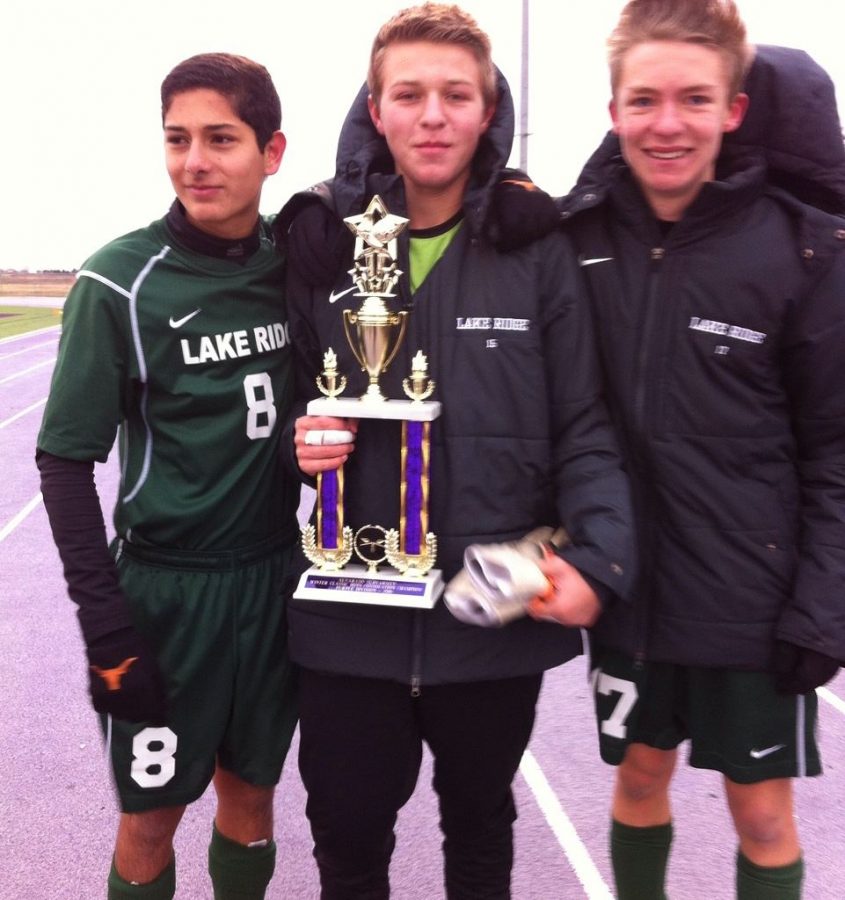Kneeding Support
The decisive soccer game against Mesquite Poteet was going bad, and junior, Tomas Hoyos, forward for Lake Ridge High School’s varsity team, saw his teammates were struggling. He watched as Poteet controlled his team, until he heard what he was waiting for; he was subbed in. Tomas, without hesitation, jumped head-first into the game, turning the match to Lake Ridge’s favor. Until the unpredictable happened.
“We were playing against Poteet High School, and my team sent me the ball and I got it, but then I got pushed by the other player. I put all my weight on my left leg, and that’s when I tore my ACL, because I pivoted,” said Hoyos.
A torn ACL has been the nightmare of many athletes who play high-demand sports such as football, soccer, baseball, and basketball. The ACL, or the Anterior Cruciate Ligament, helps in preventing knees from buckling and in rotational movements. Hoyos didn’t know at first that it was his ACL, and suspected he injured his meniscus, which is essentially what absorbs shock in the knee, until his doctor ordered an MRI scan.
“My doctor wasn’t sure that it was my ACL, and she thought it was my meniscus. Meniscus injuries usually take two weeks, when ACL injuries take eight months. Once we got the MRI, I realized that I had to consider surgery if I wanted to play next year,” said Hoyos.

Beyond surgery, Hoyos needed a rigorous routine of physical therapy and training, as a torn ACL can change an athlete’s entire conception of their body if the ACL must be grafted, according to Chris Centeno, MD, from Regenexx, a Stem Cell research organization focusing on Interventional Orthopedics. Not only does the steeper angle of the new ACL contribute to the development of arthritis, but it’s more prone to front to back-and-forth motion.
“When the ACL is completely torn, oftentimes a new ligament is artificially installed via surgery. This surgical implant however is not at a 45 degree angle, but because of technical constraints, is often at a much steeper and almost vertical angle. This vertical angle of the new ligament is a problem, as it’s not the right angle to prevent much front-back motion. To compensate, the ACL graft is often tightened down, adding compressive loads to the knee that can again increase the amount of arthritis,” said Centeno.
Regardless of the long-term effects of surgery, a large amount of any recovery depends on the support of others, which isn’t an issue for Hoyos. The Lake Ridge Soccer team constantly provides encouragement, from making sure he goes to physical therapy to simply asking how he’s doing.
“They’re always encouraging me by asking me how my therapy’s going and they tell me to get back quick. Coach Elolf said he’s going to be waiting for me next year, which makes me feel really relieved. I’m going to do my best to get back to the game next year.” said Hoyos.
Yet that time can’t come soon enough, according to sophomore, Zane Darden, who is a teammate of Hoyos. Darden describes him as a driven player, who has his heart and mind in the sport, as well as a perfectionist who demands more from himself than any other.
“When I played with him, he was always really dedicated. He was one of the hardest workers on the field and always got mad when he messed up. He was just really passionate about soccer.” said Darden.
Injuries to the ACL can take 8-12 months to heal and often they require a long, arduous recovery time with specific instructions on how to care for the injury. However, with a team of supporters and an efficient healing process, Hoyos could very well be able to participate in next year’s soccer playoffs.


